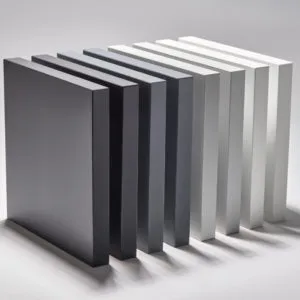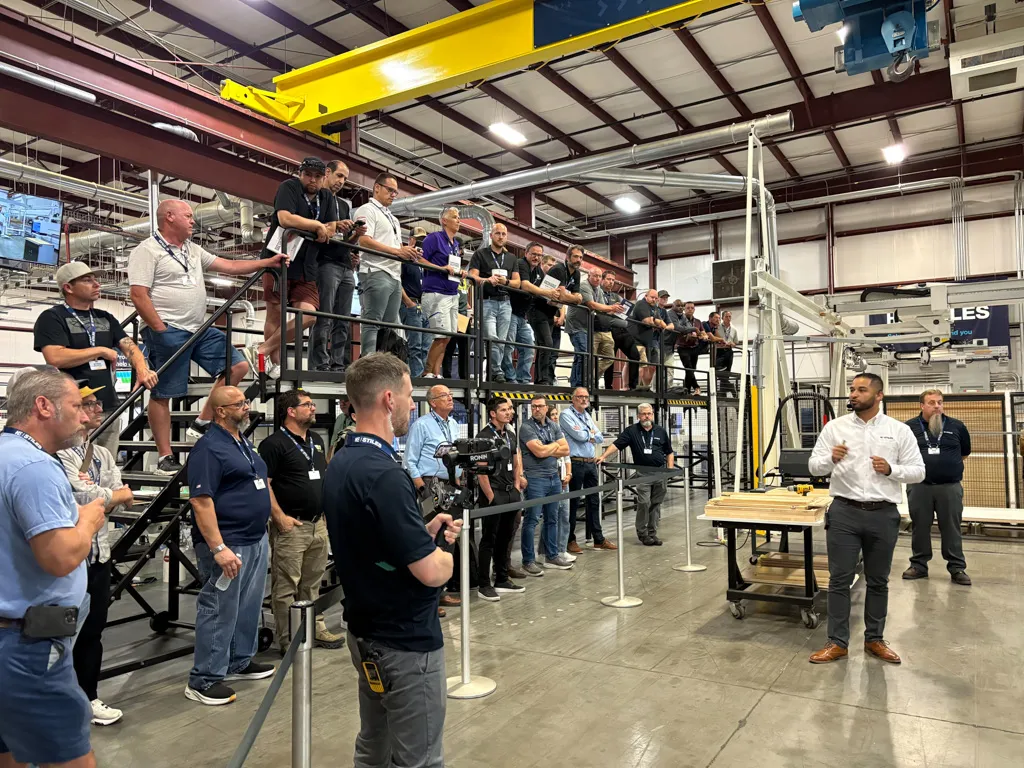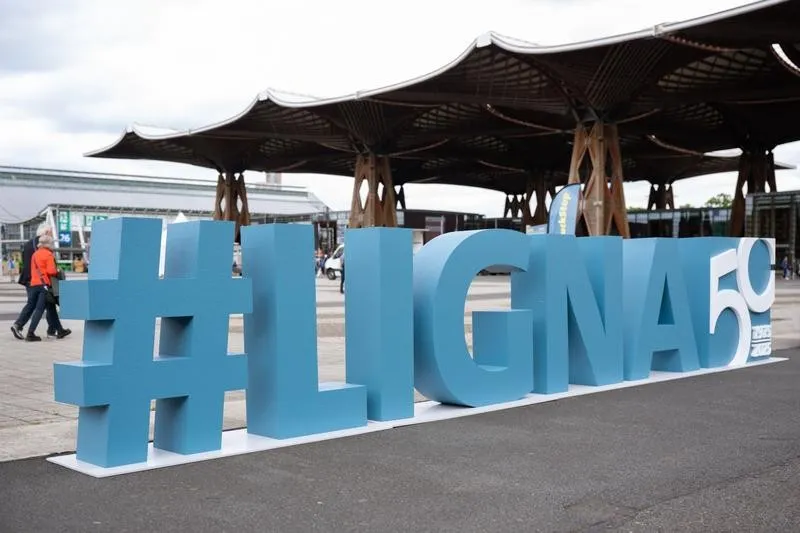Table of Contents
New Technology helps problem solving organization serve more needs
 They say that successful investing is about managing risk, not avoiding it. And for Laminate Works, investing in high-quality solutions has been worth the risk.
They say that successful investing is about managing risk, not avoiding it. And for Laminate Works, investing in high-quality solutions has been worth the risk.
“We’re not starting with a product to sell. We’re a solutions-oriented company,” said Bert Clothier, Laminate Works president. “We start with finding out where the pain point is and how we can fix that. I think as humans it’s our nature is to respond with whatever we’re faced with. If our day is really full, our typical response is to just work more. We’re trying to live by the adage, ‘work smarter, not harder,’” he said.
DOUBLING DOWN ON INVESTMENT
In 2017 Laminate Works (LW) was operating two identical facilities in Kansas City and Dallas. Both were laminating panels and converting them into component parts exclusively for OEMs. Owner Bert Clothier saw an opportunity to consolidate the company’s panel processing machinery to Kansas City and convert Dallas into a panels-only operation. Clothier felt this would help the company serve its customers better by having all the panel processing machinery in Kansas City, allowing them better meet spikes in production and provide redundancy to their machine centers.


He quickly realized the value of this decision based on customer needs, and what he was seeing in the industries they serve, and decided LW needed to invest heavily in new capabilities in the Kansas City facility. It became apparent that the best way to do that would be to sell the Dallas operation and reinvest the funds in Kansas City. That idea quickly became part of a plan after selling the Dallas plant to Wilsonart in July of 2018.
PLANNING FOR GROWTH, MANAGING RISK
In business to help their customers keep their promises, LW asks three questions when evaluating new solutions. What are customers already asking for? What future opportunities could they benefit from? How do new potential solutions align with their business strategy? After answering these questions, Clothier determined the company needed to invest in four main areas of manufacturing: PUR panel lamination, higher capacity panel processing, laser edgebanding and some level of automation across the entire operation. In addition, he decided to remodel the entire front office and put in a new ERP to modernize their complete operation.
After formulating a strategy, the next step was to go shopping. A small team attended IWF in 2018 to check out machinery and determine the best fit for each capability and start determining how they would all fit together. In the end they had a plan they could execute. When the company was prompted to invest in a laser edgebander, there were a combination of things McElhany and Clothier considered. “The fact that it's seamless makes it a very attractive solution, especially for lighter colored surfaces where a glue-line shows more,”said McElhany. But just like with every investment, there were risks involved.

Looking back 15 years ago, Clothier recalls a time the company bought its first contour edgebander, a similar risk he was ready to take. “That’s the thing that’s kind of funny about life, how the risks keep getting less. I remember it was about $400,000 500,000 we were spending, and I just thought I was off my range spending that much on a single machine to do contour edgebanding, something that specialized.”
But customer demand led the way. “We had a lot of customers that were trying to figure out a better way to contour-band parts. When I went into different shops, I saw them applying it by hand. So in the back of my head I was thinking, I know if I put one of these in and I looked at the sum of all my customers, I could keep that machine busy,” said Clothier. And that’s exactly what he did. The company now has two machines running most of the year, several shifts a day. “You take risks and you see how they pay off.” But when it comes to laser edgebanding, that was going to be a little more of a challenge. Clothier explained that while there’s so much information on laser in the U.S., one major challenge is the fact that there isn’t a whole lot of raw material available.
“You can’t buy it the same way you would with normal PVC edgebanding where you buy one roll at a time. It doesn’t work that way with laser. And it’s different for the big guys. For them it’s not quite as big a deal to order large quantities of a specific edgebanding color to match a specific laminate so they can introduce laser. But for everybody smaller than those guys, it is a big deal.” The goal for LW was to be able to offer this new solution customers who would want a seamless edge in their offering but don’t have the recourses to make their own investment. And according to McElhany, the customer response is optimistic.
“We’re running a lot of different campaigns right now and laser edgebanding is the thing we’re getting the most response from and the most activity on. People are responding really positively to it,” said McElhany.
A SUPERIOR BOND
The PUR lamination line they chose is a custom designed, fully automated, double sided panel lamination line that uses Burkle laminating equipment. The line also includes four Wandres panel cleaners and two separate dual 55-gallon drum Nordson glue management systems. The automation solution begins with a large robot introducing the substrate into a clean room. In the clean room the panels are bonded on one side, flipped and bonded on the second side. As the panels leave the clean room they are flipped, trimmed, cleaned and stacked. The biggest advantage with the new line is that it improves the surface fidelity, whereas in batch laminating you might get some telegraphing of the substrate or glue. “The laminates we get to choose today are light years ahead of the laminates we chose 15 years ago. It has a lot to do with the printers obviously. They can print laminates with no repeat, make press plates that have incredibly realistic woodgrains, stone patterns and textures. So, when you look at the finishes and the printing capabilities, laminate is much more of a high-fidelity product than it ever was,” Clothier explained.
In addition, the new line allows them to increase capacity by producing nearly 120 panels an hour depending on the size. One challenge they face is that since they don’t make anything for themselves, every job is different, and the line needed to be able to adjust in real-time as jobs flow through the shop. To make sure their new line could maintain the flexibility their customers needed, servos were installed on all the machinery to allow bar codes to automatically adjust the thickness and pressure to give the line a near batch-size-one capability.


FASTER PANEL PROCESSING
If you’re going to produce a panel every 24 seconds, you’d better be prepared to process it just as fast. For this reason, LW decided to completely redesign its manufacturing floor, add an automated rear load IMA Schelling FH6 saw, a BIESSE Vektor 15, an IMA Performance One Laser Edgebander, and introduce bar code scanning to every machine center downstream from the PUR line.
Panel stacks are still taken to the saw on transfer carts by a human, but once they’re loaded, the IMA saw takes over and parts
aren’t touched again until they come out of the front cut and are ready to move to the next step. This blend of automation and human interaction became the best solution for the company to achieve the greatest efficiency in their operation. This is mainly because every job they do is unique and every day their production schedule changes. Another new machine added was the BIESSE Brema Vektor 15. LW makes a high-volume of elevator panels and this machine does a great job boring thin panels with accuracy. Unlike most boring machines, this one processes parts vertically and has rollers on either side of the aggregates to hold the panel flat, which can be an issue with other machines.
A SEAMLESS, NO GLUE-LINE EDGE
One capability LW knew their customers could benefit from immediately was seamless edgebanding. This technology really makes a difference in the aesthetics and overall quality of the edge and is something many of their customers were already using or asking for. They explored options for hot air and laser and ultimately decided on a combination PUR and Laser edgebander from IMA, the Performance One.
Their custom-built solution, much like all their machinery, needed to able to seamlessly handle parts from around 4 inches wide to 10 feet long without skipping a beat. It includes a fully automated return with bar code scanning and 24 material feed slots, making it both fast and flexible to handle the wide range of jobs that come through their shop on a given day. Laser edgebanding is a significant investment, especially at this level, and now that it’s implemented, their customers have access to this new capability without having to make the investment themselves.
BRINGING NEW PRODUCTS TO NEW MARKET
In the process of developing their new capabilities, Clothier and his team started dreaming about what their customers would do with them, as they now had solutions to several gaps in the industries they serve. They also realized they now had an opportunity to bring actual products to market, which is something the company has never done before. For the last 20 years, they always made exactly what a customer asked for.
To help manage this new direction, the leadership team determined they need someone to head up this effort, and so they looked for and hired an expert in bringing new products to market, Vice President David Stetler.
Stetler’s job was to work with the entire team to identify opportunities, evaluate their scope and potential, evaluate partners and ultimately execute a plan to bring chosen products to market. The first product he identified would become known as LW Surface Solutions.
The vision for these Surface Solutions would be to recognize best-inclass materials within a category, starting with high-gloss and super matte, and build a program to give their customers the ability to add them to their component parts with a seamless no glue-line edge. All materials would be in-stock or quickly available and ready to start production immediately. The vision is to continue finding surfaces to add to the offering based on customer demand and the ability to find the right material partners. Panolam is another company that partners with LW on a regular basis with its Nevamar and Pionite product lines. The two companies have a solid relationship as they work to meet customer specifications.
“First we identify an opportunity in the category from our market research and customer feedback, then our team reaches out to our network of suppliers to identify the best solution in the category,” said Stetler.
LESS IS MORE
When it comes to customer demand, Stetler agreed that something customers are really asking for is a lightweight product. “We constantly see people try to figure out how to take weight out of something,” said Stetler. It turns out they had the machinery and the capabilities to produce a lightweight panel that had superior screw holding power and edge-banding capabilities. They would call it Airply Utlra Light Core.
The new product line of specialty substrates is up to 76% lighter than particle board and MDF and meets the requirements for strength and screw holding power in applications from worksurfaces, tabletops, cabinet doors, wall panels and more.
POLYURETHANE REACTIVE LAMINATE PANELS (PRL PANELS)
The final product Stetler and team developed in their first round is 100% driven by their sheet based, double sided PUR lamination line. They determined that the process was different enough from cold pressed panels that they needed a name just for the panels. LW chose the name REACT PRL Panels and wanted to define them as being bonded with PUR adhesive, inside a clean room, both sides at a time, trimmed and ready to start production. REACT panels have a flawless face and nearly unbreakable bond. Because they’re bonded with PUR adhesive, they can be made with a nearly unlimited variety of surfaces substrates. This includes composite woods, plywoods, wood veneers, stone veneers, plastics, foams, linoleums, metals and more.
MANAGING COVID-19
In light of the novel coronavirus pandemic at hand, companies are trying to come up with creative solutions to not only keep business in operation, but to also help battle the spread of the virus. Being in such an essential industry, it’s a priority for LW to keep their team safe and support one another, but it’s also a priority to rise to the challenge. “Thanks to the laser edgeband there’s less place for bacteria to form and it’s extremely beneficial for lab-type environments,” said Clothier. “We’re definitely promoting those things as much as we can. The other thing is that we’re also promoting pretty heavily that we’re in operation, given the fact that we exist because our customers have made promises to theirs. Today’s a time where people potentially need us now more than ever.” Stetler reinforced the value of the company’s new product Velour Super Matte with FENIX NTM, explaining that although it’s not antimicrobial because it doesn’t kill anything, it resists the growth of virus, bacteria and fungus on it.
“Velour is also chemical resistant, which means it can be cleaned with hospital grade cleaners without deteriorating the surface. Due to the laser edgebanding, nothing can grow on it and nothing gets trapped in the glue,” he said, adding that the product lends itself to be easy to clean and therefore more sanitary.
Crystal High Gloss is another surface solution Stetler echoed, as it can be cleaned with the same kind of chemicals. “Both surface solutions are pretty timely in terms of their sanitary factors and what can be done with them in a restaurant or medical environment,” he said.
LOOKING TO THE FUTURE
Now that their new capabilities are in production, the team at LW is thinking about where to go next, already exploring several new products and new markets, most being driven by customer requests and identifying opportunities in the market. With the PUR line now running, it opens huge areas of opportunities in industries they’ve never been able to serve before.
"We're constantly watching for new materials, technologies and applications for them that align our strategy with what our customers are asking for,” added Stetler. “Each new offering opens up new markets for us to explore, it all builds on top of each another." In addition, now that LW has defined products, the company is able to talk to the A&D community to get their specs written into a project from the start. This is also something LW has never done before. In the end, all these new machines, capabilities and products haven’t changed who LW is or their purpose. The company exists to help customers keep their promises to their own clients, and they have no plans to sell direct to an end user or compete for their business. s&p










